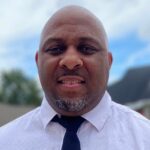“‘Set Thine House in Order, Says the Lord!”
By Lou Yeboah
“For I know your deeds, that you are neither cold nor hot; I wish that you were cold or hot, but because you are lukewarm, I’m about to spit you out of My mouth. And because you say, “I am rich, and have become wealthy, and have need of nothing,” and you do not know that you are wretched, miserable, poor, blind and naked, be zealous and repent, so that you may live and not die, [Galatians 5:19-21] and pray that you are found worthy to escape the tribulation that is coming upon the whole world. [Galatians 5:19-21]. I tell you, the night is fading away, the sun is peeking over the Eastern horizon, and I am coming soon!” [Romans 13:11]. He who has an ear, let him hear what the Spirit says to the churches. [Revelation 3:15-22].
God’s message to each of us is as it was to Hezekiah, “SET THINE HOUSE IN ORDER FOR THOU SHALT DIE AND NOT LIVE.” Just as Isaiah did not have anything else to say, neither do I. Isaiah delivered his message and left. Why? Because the message was plain enough that it did not need to be explained.
Getting “our house in order” MUST become a priority in all of our lives. The Bible declares that there will be a 2nd coming of Christ. When? We do not know. But when He do come, He will be coming as Judge this time.
I can only hope and pray that today is the day that you put into action, the steps needed in getting your house in order. This is our finest hour! The present shaking that we are experiencing is proof positive that God’s Kingdom is advancing on the earth and the hour of His return is near. Be vigilant. Be focused. The present world as we watch it is undergoing shaking. Governments who are previously unmovable are trembling. Kings and Rulers who are untouchable in the past are being removed from their glorious palaces. [Haggai 2:6-7, 21-22] Therefore let us not sleep, as others do, but let us watch and be sober.” [1Thessalonians 5:6].
“A watchman stood on the city wall and warned the people… [Ezekiel 3:17].
Put to death therefore what is earthly in you: sexual immorality, impurity, passion, evil desire, and covetousness, which is idolatry. On account of these the wrath of God is coming. In these you too once walked, when you were living in them. But now you must put them all away: anger, wrath, malice, slander, and obscene talk from your mouth. Do not lie to one another, seeing that you have put off the old self with its practices …y. [Colossians 3:5-10].
“He who testifies to these things says, “Surely I am coming quickly.” Amen. Even so, come, Lord Jesus!” [Revelation 22:20].
 Westside Story Newspaper – Online The News of The Empire – Sharing the Quest for Excellence
Westside Story Newspaper – Online The News of The Empire – Sharing the Quest for Excellence


